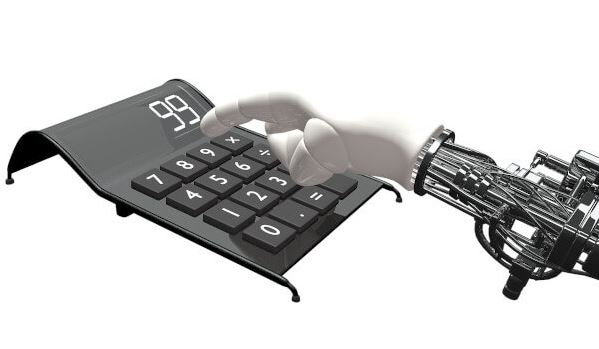
Millions of Americans who paid income taxes during the calendar year are required to file their tax returns in April. It also marks the beginning of the US tax season. It becomes extremely difficult to comprehend the complicated documentation and perform all the math to get the total amount you owe the IRS.
People who report income from numerous sources often find the process to be particularly overwhelming. You must fill out multiple self-employed tax forms, including the necessary receipts and transaction proof, print it out, and mail it to the IRS. The conventional method of filing income taxes is frequently unworkable because the majority of taxpayers end up making mistakes that result in fines. An explanation of the unpaid or overpaid taxes is provided in an IRS notification. People have started to ask if there is a way to automate income tax filing as a result of this.
Self-employment Tax Filing Regulations
In 2021, 121.9 million individuals worked for themselves. You must pay income and self-employment taxes if you are self-employed.
Every US taxpayer has to pay and eventually file income taxes. This is true for both full-time freelancers or have a side job that pays you $400 or more annually. It is the taxpayer’s responsibility to keep track of their business expenses so they may simply write them off at the end of the tax year. Before making any new financial plans, including expansions and investments, they must also take the tax burden into account.
If the following list sounds familiar and you fit in one of these then you are a self-employed person:
- A sole trader
- A limited liability company’s partner
- Owning a small business
- A specialist
- Independent businesses
- Freelancer accepting jobs
You must declare a net income of more than $400 in order to be considered responsible for filing income tax. Your total taxable income is 92.35% of your net income, according to the IRS. By deducting your legitimate business, medical, and other expenses from your year adjusted gross income, you can calculate the total dues. Remember that self-employment tax is a compulsion, even when you qualify for social security benefits.
Finding Your Self-Employed Tax
The IRS already has a pre-set percentage of your total income designated as self-employment income. Social Security Taxes (12.4%) and Medicare Taxes (2.9%) make up this amount. This indicates that a total of 15.3% of your self-employment income is paid to the IRS. Thankfully, you are entitled to a 50% deduction (equal to the employer’s share of the tax).
The self-employment tax, aka SECA is divided between you and the employer if you work for someone. Only 8% of your adjusted gross income must be paid toward the 15.3% tax; the remaining 50% is covered by your employer. This lessens your obligation to cover the entire taxable amount on your own. The Social Security and Medicare Taxes must be wholly covered by you. Because of this, the IRS has implemented a 50% deduction that lowers your taxable income in half.
The only portion of your self-employment income that is subject to social security tax is the first $137,700. Everything over that is excluded. It differs for Medicare. You will be required to pay 3.8% of the excess salary if your self-employment earnings for the fiscal year exceed $200,000. To have a better idea of your tax liability you can use a tax bracket calculator.
How Can the AI Tax Calculator Aid in Income Tax Filing?
One significant deductible was the 50% one. Every so often, the IRS modifies the regulations governing deductions. Many deductions that were previously permitted have been eliminated as a result of the Tax Cuts and Jobs Act of 2017, while new deductions have also been added. Some of these modifications will continue even after the act is no longer in force, even though the majority are just temporary and will end in 2025.
More deductions can result in significant long-term tax savings, but they also place more responsibility on the self-employed taxpayer who must keep track of all their expenses. Additionally, you must keep track of every transaction’s receipts so that you may provide them to the IRS in the event of an audit.
The majority of self-employed people find manually calculating taxes to be somewhat onerous, so they outsource this task to a tax accountant or other expert who keeps accurate records of all expenses. Even so, there is a possibility of error when performing the intricate calculations by hand. Using an AI income tax calculator is the only practical way to maximize your savings and guarantee that no expense is overlooked in your income tax records.
The AI tax calculator functions as shown below.
- Join your expenses to the application.
- Allow the app to validate each transaction and choose those that qualify as deductibles.
- You’ll be prompted by the app to approve or refuse deductions.
Wait for the software to determine the taxable income after removing all the deductibles after entering the deductible expenses. You should now have a clear understanding of all the costs involved as well as the overall sum you owe the IRS for the fiscal year. To have the AI automatically add your spending to the deductibles, you must link the accounts that you use to make the payment.
You are given the option to accept or reject the expense before it deducts the appropriate amount from your taxable income. The deduction computation process is made simpler by the AI tax calculator.
Which Forms Are Required for Self-Employed Taxpayers to File Income Tax Returns?
Self-employed people must file their income tax and self-employment tax separately, as was already mentioned. Whether you are an individual contractor or a businessperson affects how much tax you owe and which forms you should use to record the income. The IRS has provided a set of 1099 forms that can be used to record your net earnings and expenses for self-employment income.
In order to keep your dues under $1,000, it’s crucial that you pay your self-employment tax every three months. The estimated tax must be paid each quarter, and the remaining balance must be paid with tax returns. Your best option is to pay anticipated tax on a quarterly basis because you don’t have an employer who can deduct taxes from your income every three months.
For an estimate of your taxable income, use Form 1040-ES. One way to do this is to check that you can accomplish this with the aid of the records from your prior year’s income tax return. If you’ve only recently begun freelancing and this is your first time filing the self-employment tax, you must estimate taxes based entirely on your best guess about the potential income you will get for the year.
Those who overpaid their quarterly taxes can use the 1040-ES form the next quarter to make the necessary adjustments. The same holds true for those who understated their quarterly revenue. Another 1040-ES form must be completed, along with the remaining balance.
The income and losses from the business you’ve founded or the profession you practice must first be reported using Schedule C. To learn more about your yearly returns, refer to the Schedule C guidelines. Use the AI tax calculator if you are having any trouble figuring out your income, losses, and permitted deductions. Everything will be automated, greatly simplifying the income tax filing procedure.
Making Home Office Deductions Calculations
The COVID epidemic of 2020 established work-from-home as a new norm. Home office deductions are now included in the deductibles because the great majority of employees are now working remotely or in a hybrid environment. You can deduct a sizable amount from your income as expenses whether you are taking a standard or itemized deduction.
Determine the total amount of space you have set aside for office use. There’s a 300 square feet cap if you decide to take the standard deduction. Every square foot can be multiplied by $5 to earn a deduction of up to $1500. Without a desk or anything else you can use for personal work, make sure this area is only used for work. The IRS must also see proof that you have set aside this space for business use.
For your home office deduction, the IRS permits you to deduct 100% of some costs, like repairs and replacements. In addition, you can deduct a percentage of your home expenses from your adjusted gross income. A minor portion of the total expenses are included in this. For instance, you can write off 15% of your water, electricity, and other expenses if you used 15% of your total living area for work-related activities. Include any associated costs for your home office, including Wi-Fi, phone bills, vehicle expenses, and vehicle maintenance.
Bottom line
A self-employed person must submit multiple 1099 forms to disclose their precise earnings and outgoings for the year and to make additional changes for the calendar year. You can read about 1099 benefits. To compute expenses for business usage, utilise IRS Form 8829. Use the AI tax calculator if you are having other problems estimating your net profits.







